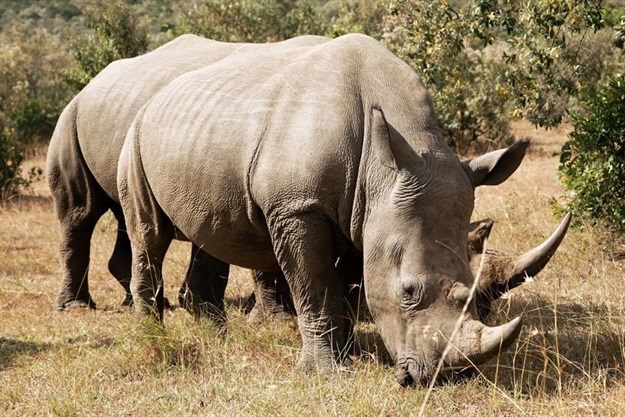For the first time in 100 years the wild tiger population has risen. It's a success story viewed as a beacon of hope by South Africa's rhino conservationists in their fight to combat the wiping out of the species.
The triumph of international tiger conservation efforts comes in the face of the additional challenges of deforestation and human wildlife conflict. The poaching and illegal trade of tiger parts led to the endangerment of the species to the point of near extinction.
But this year, for the first time in a century, the number of wild tigers has increased. There are suddenly more tigers in India, Nepal and Russia, according to WWF census data released recently. This positive advance in the Asian big cat’s plight is now a story of hope for the African rhinoceros.
Extinction a very real possibility
Last year alone 1,175 rhinos were killed by poachers in South Africa. The casualty rate of 22 rhinos a week saw the wiping out of 4,9% of Africa’s rhinoceros population in 2015. The findings of a peer-reviewed science research paper cautions that, should the current rate of poaching persist, the extinction of the rhino is a very real possibility in just 20 years.
While medicinal myths and the high value of rhino horn remain the driving forces behind poaching, South Africa will need R6,2bn over the next two decades to successfully combat the problem. This figure increases to R9,3bn when the population of privately-owned rhinos in game reserves is factored into the equation.
So what strategies from the recent and successful tiger conservation programme are appropriate for South Africa, if we are truly set on preserving rhinos?
Without doing away with current rhino anti-poaching strategies at a grassroots level, addressing the source of the problem is necessary to curtail the very demand that is fuelling poaching activity.
The tiger conservation efforts have focused on awareness campaigns to curb demand and trade of tiger parts in Asia. These efforts illustrate the reasoning that poaching is a symptom, consumption is the cause and that successful treatment of the issue is possible.
Demand by an end-user
Poaching, dehorning and rhino deaths are a direct result of demand by an end-user. The top Asian market for Africa’s coveted ivory powder is Vietnam, where rhino horn is revered as cancer cure, a status-giving drug for wealthy elites and a medicinal tonic for excessive alcohol consumption.
And so focusing on addressing the source appears to be the more sustainable, cost-effective and long-term solution.
Conservation efforts should focus on convincing the Vietnam government to put effective law enforcement in place, and create and uphold a regulatory framework that will restrict trade and demand. The fact that no significant seizures of rhino horn have taken place in Vietnam points to the failure of law enforcement in the country.
Law enforcement efforts should be backed up by educational programmes that dispel beliefs that rhino horn has medicinal value and is seen as a societal status enhancer.
This approach is already delivering results: in 2014, a year-long public awareness campaign saw only 2.6% of Vietnam citizens continue to buy and use rhino horn, a decrease of 38%. There has also been a marked decrease of 25% in the number of people who think rhino horn has medicinal value.
More commitment and investment
In South Africa more commitment and investment in conservation programmes is needed. India, home to two-thirds of the wild tiger population, has channelled significant financial resources to its tiger conservation programmes, delivering targeted results.
Government is currently considering more options to fight poaching. These include a collaboration with Denel on high-tech drone monitoring and observation systems, community engagements, more visible policing and the deployment of rangers and counter-intelligence operatives.
But the reality remains that despite the efforts of both government and the conservation community last year, poaching has continued to devastate the rhino population.
Successes in anti-poaching programmes in the northern parts of the country have seen poachers simply moving to the Eastern Cape. While it is sad that they continue to operate, it’s a positive sign that they are being forced to retreat.
A key feature of the tiger success story is the results of shared resources and co-operation - especially between India and Nepal. Good communication saw a drop in tiger smuggling.
Share strengths, best practices
Good cooperation in South Africa will entail sharing resources between provinces and regions. Government, the private sector, civil society and conservation need to jointly form a rhino anti-poaching movement.
It is time to create a strategic map to share strengths and best practices. There have been some great successes in the Kruger Park. That intelligence and experience should be implemented on a national scale.
The lessons from Asia’s success in reversing the decline of wild tigers offer us an important way forward. Positive progress will require new strategies to curb demand for rhino horn in Asian markets, a commitment and investment from government and close collaboration and co-operation between provinces and even other African countries.




























